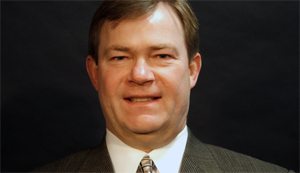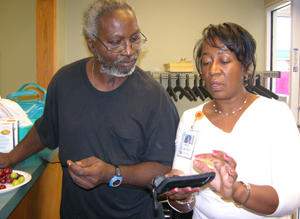As a primary care physician for nearly 30 years, Donald Darst, M.D., has had a front row seat to the changes in the American health care system.
“The face of primary care has changed,” said Dr. Darst, a clinical associate professor of medicine at UNMC. “The current climate … has to change.”
 |
Donald Darst, M.D. |
Dr. Darst serves on a legislative advisory council resulting from LB 396, the Medical Home Pilot Act. The bill’s goal is to improve health care access and outcomes, and contain the costs of Medicaid.
The advisory council works to establish guidelines to entice more medical practices across the state to embrace the medical home concept.
“The core concept of the medical home is a patient’s personal, comprehensive and long-term relationship with their primary care physician,” Dr. Darst said. “It’s a team approach to care; a better way to provide disease prevention, screening, education, and, when needed, treatment.”
What is the medical home concept?
 |
Diabetes education nurse Carolyn Cotton, right, shows Jack Jasper how to use a glucose meter kit at the UNMC Physicians Turner Park Clinic, which operates under the medical home model of care. |
Instead of brief encounters with their doctor, a patient may see a team of health care providers.
“This approach relies on preventing someone from getting sick,” Dr. Darst said. “And when we see warning signs, we’re better equipped to handle them.”
What is the problem with the current primary care system?
In many ways, it is a problem of economics.
“Insurance and Medicare pays a relatively low fee for primary care services,” Dr. Darst said. “To keep up with the cost of overhead, a physician often sees as many patients as possible in a day. That gives him time to deal with the important, urgent reason the patient came in, but not much else.”
“It’s a downward spiral and it’s killing primary care.”
Medical Home — a needed change
Private insurance and Medicare do not yet support the medical home approach.
“New ways of doing things always take a bit of adjustment,” Dr. Darst said. “We know the old way isn’t getting the job done anymore.”
The advisory council meets once a month in Lincoln. Its next scheduled meeting is March 3.